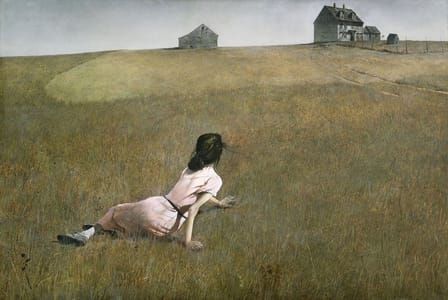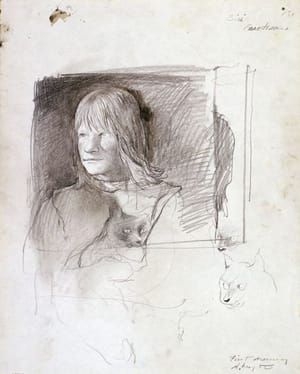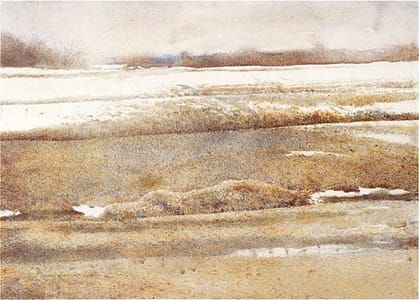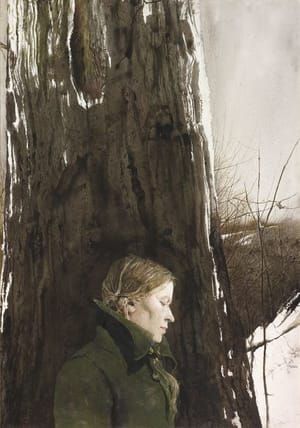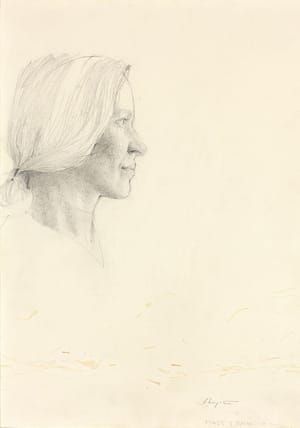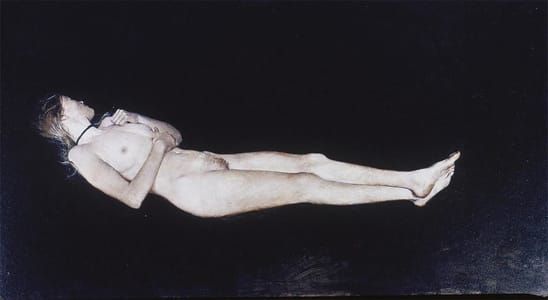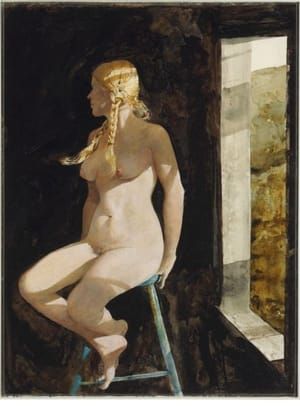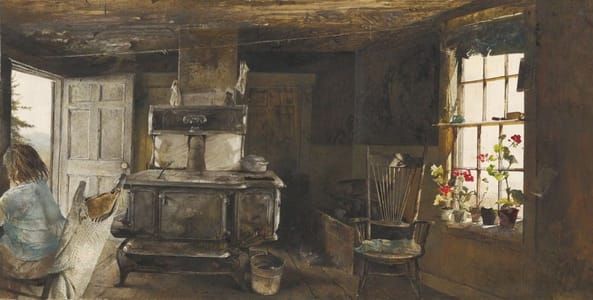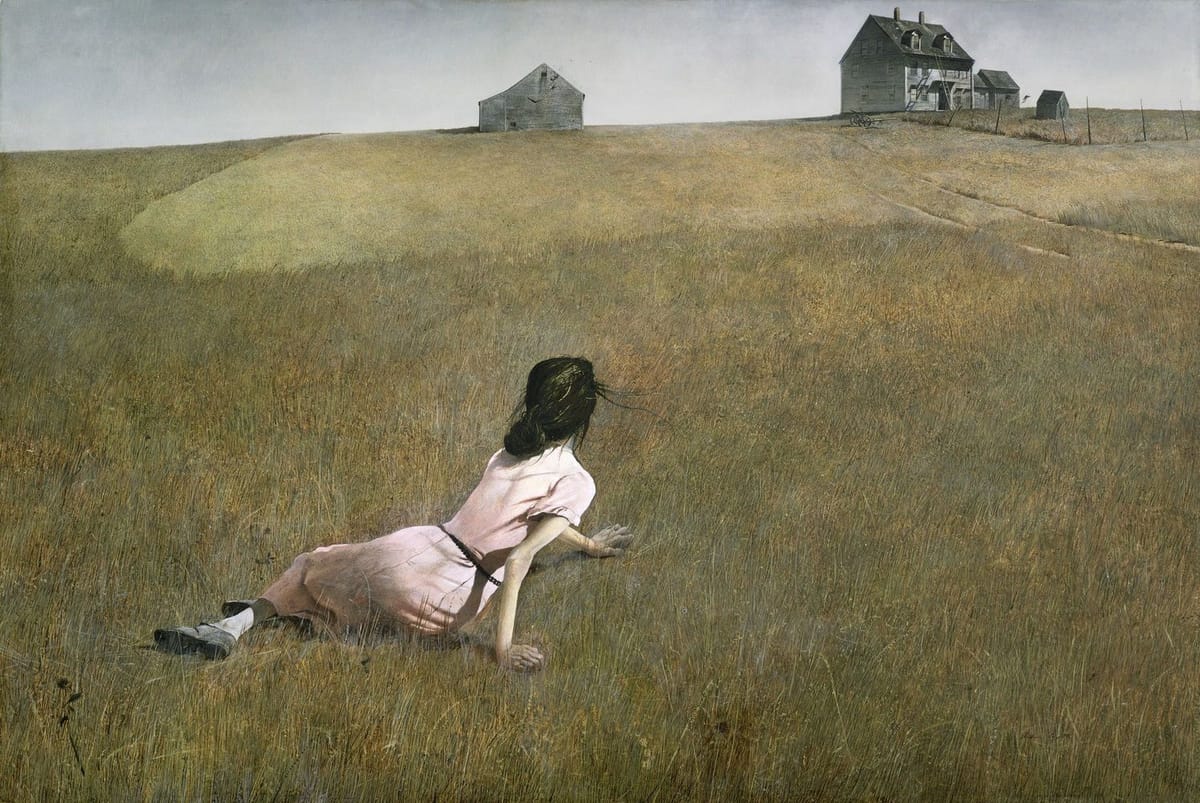

Christina's World, 1948
Andrew Wyeth
A tempera portrait of Christina Olson for which Betsy [Wyeth's wife] served as the figure model. (http://andrewwyeth.com/timeline/)
The woman crawling through the tawny grass was the artist's neighbor in Maine, who, crippled by polio, "was limited physically but by no means spiritually." Wyeth further explained, "The challenge to me was to do justice to her extraordinary conquest of a life which most people would consider hopeless." He recorded the arid landscape, rural house, and shacks with great detail, painting minute blades of grass, individual strands of hair, and nuances of light and shadow. In this style of painting, known as magic realism, everyday scenes are imbued with poetic mystery.
Gallery label from 2007
(https://www.moma.org/collection/works/78455?locale=en )
One of the best-known images in 20th-century American art is his painting, Christina's World, currently in the collection of the Museum of Modern Art in New York City. This tempera was painted in 1948 when Wyeth was 31 years old.
...It was at the Olson farm in Cushing, Maine, that he painted Christina's World. Perhaps his most famous image, it depicts his neighbor, Christina Olson, sprawled on a dry field facing her house in the distance. Wyeth was inspired by Christina, who, crippled from (undiagnosed) polio and unable to walk, spent most of her time at home.
(https://en.wikipedia.org/wiki/Andrew_Wyeth)
His 1948 painting Christina’s World is easily his most recognized piece and shows his neighbor Christina Olson scrambling around on the grassy hills surrounding their homes (she was paralyzed from the waist down from polio). It is one of my favorite paintings from the 20th century, purely because of the sadness evoked in the scene and the title, once the viewer is aware of Christina’s situation. Wyeth often chose to depict subjects that he was personally connected to, a decision that was sometimes criticized for its safeness. (http://artmastered.tumblr.com/post/110060990419/andrew-wyeth)
Christina’s World, 1948, is perhaps the most famous of Wyeth’s work, and in it he exhibits all of the classical elements of the style for which he is known. The foreground is anchored in the folded body of Christina, her head turned away, and she stares across a field of grass towards a house in the upper right of the frame. Her left hand seems to be in the moments before she reaches out towards the house, her right arm is bent forcing her torso forward, and her legs trail behind her. Despite Wyeth’s veiled allusion to Christina’s lame legs, viewers could be forgiven for thinking that she is about to either reach out dramatically towards the house or rise and walk towards it. There is, despite the documented limits of Christina’s abilities, a sense of movement in the piece. Lovers, 1981, serves as an interesting contrast to Christina’s World. In the latter Wyeth depicted a paraplegic woman, clothed and alone in a wide world looking back at her own home. There is a sense of independence, and self-sufficiency.
(https://blog.lofty.com/featured/mondays-muse-helga-testorf/)
Uploaded on Jul 19, 2017 by Suzan Hamer
Andrew Wyeth
artistArthur
Wait what?

